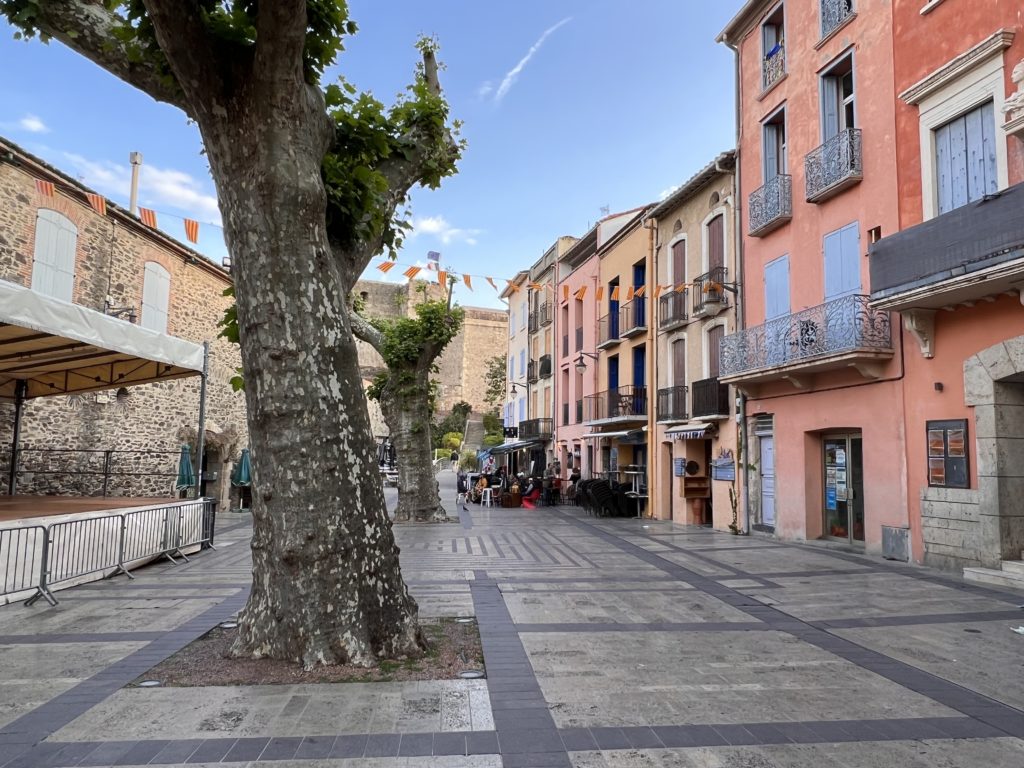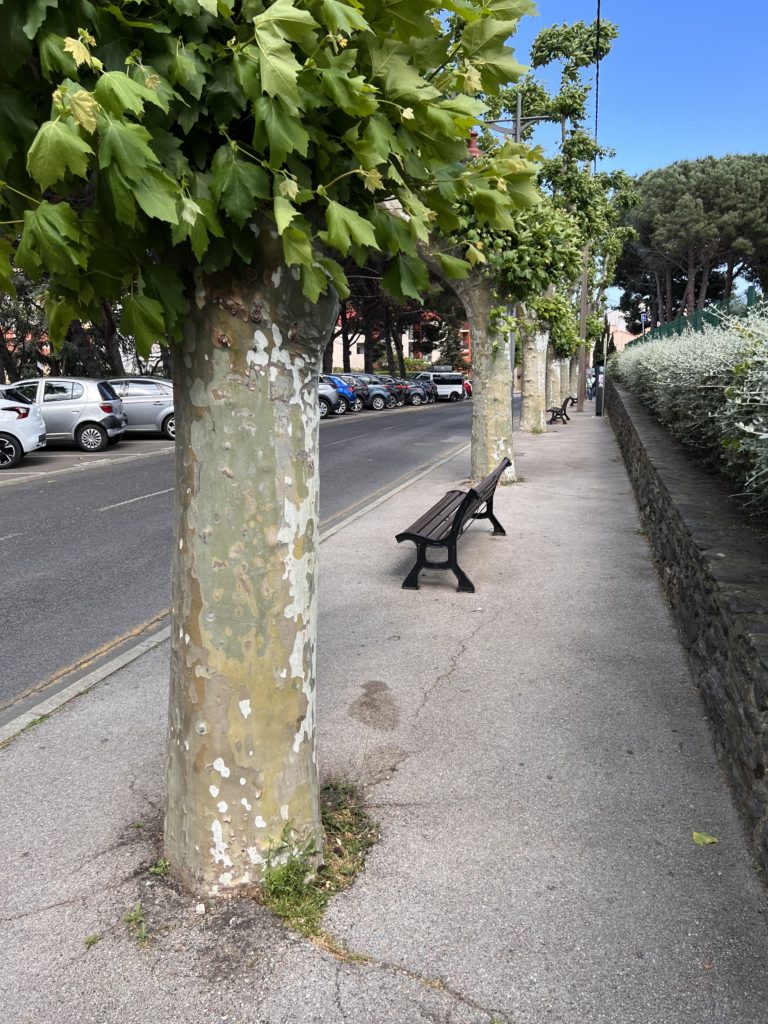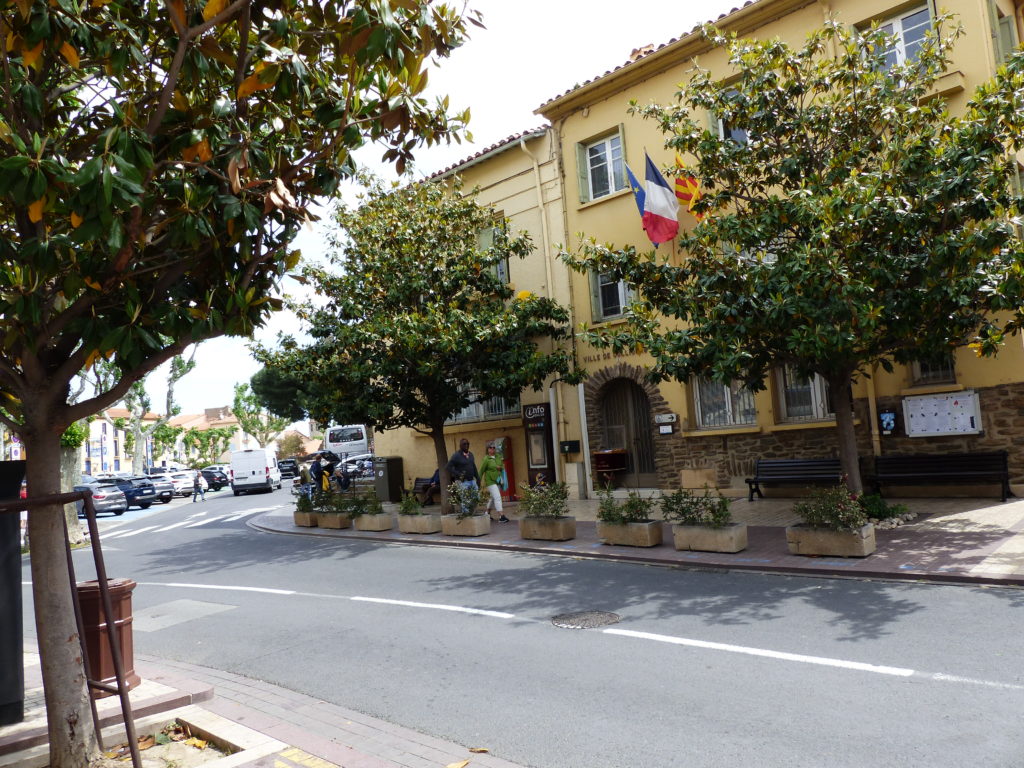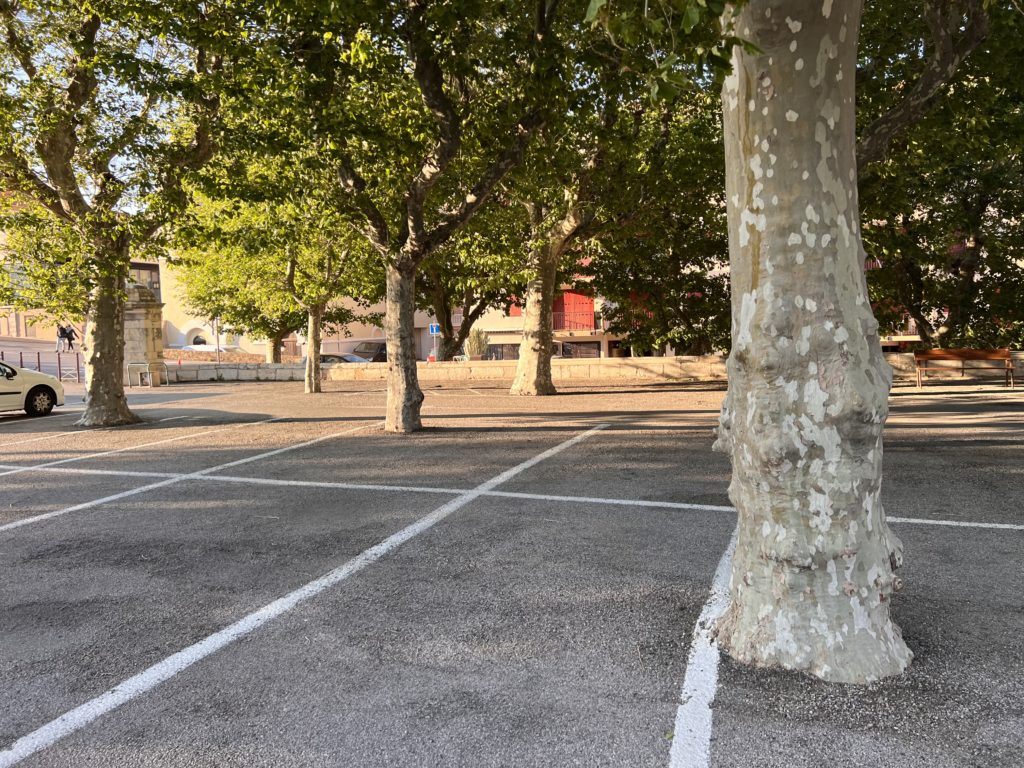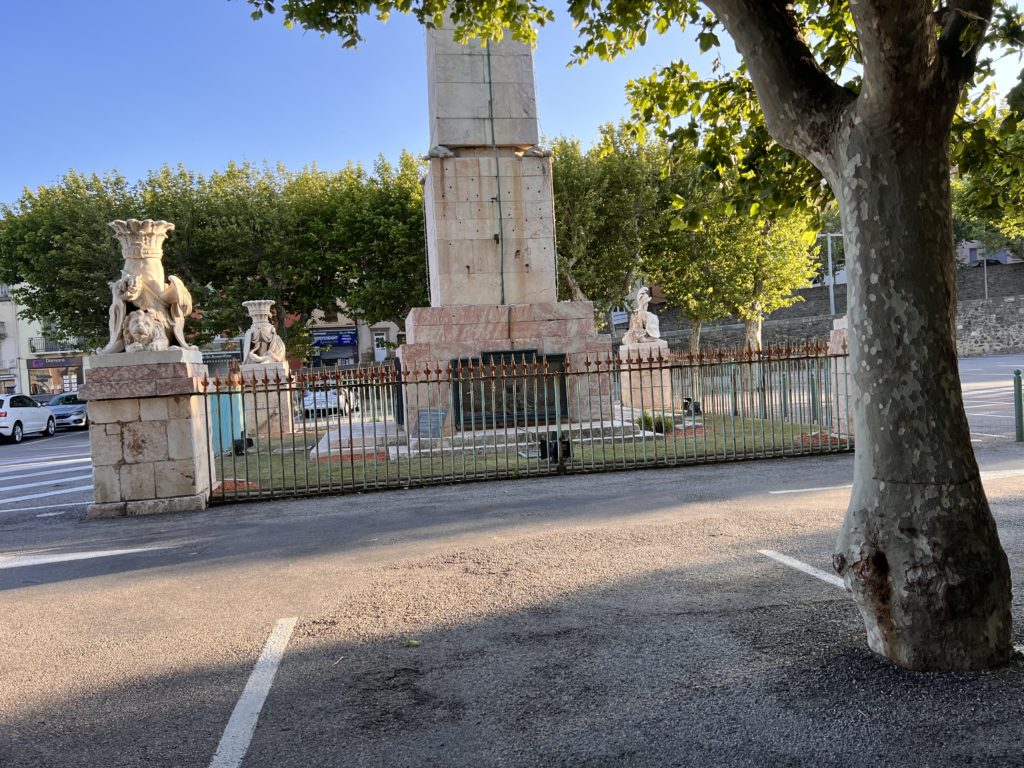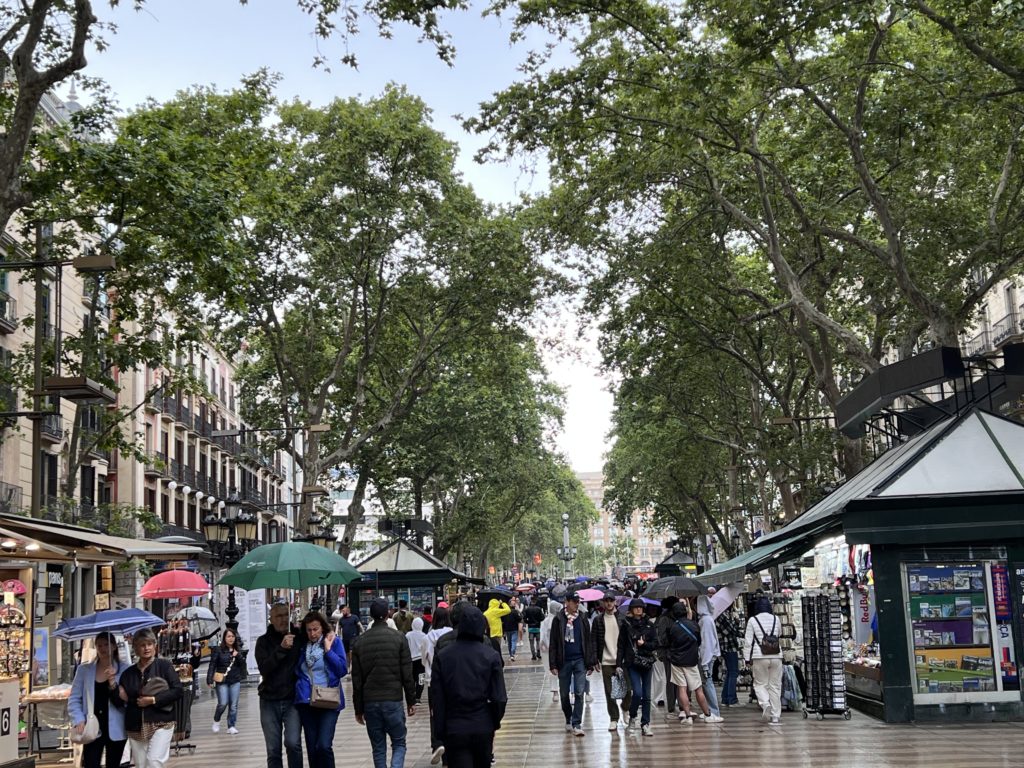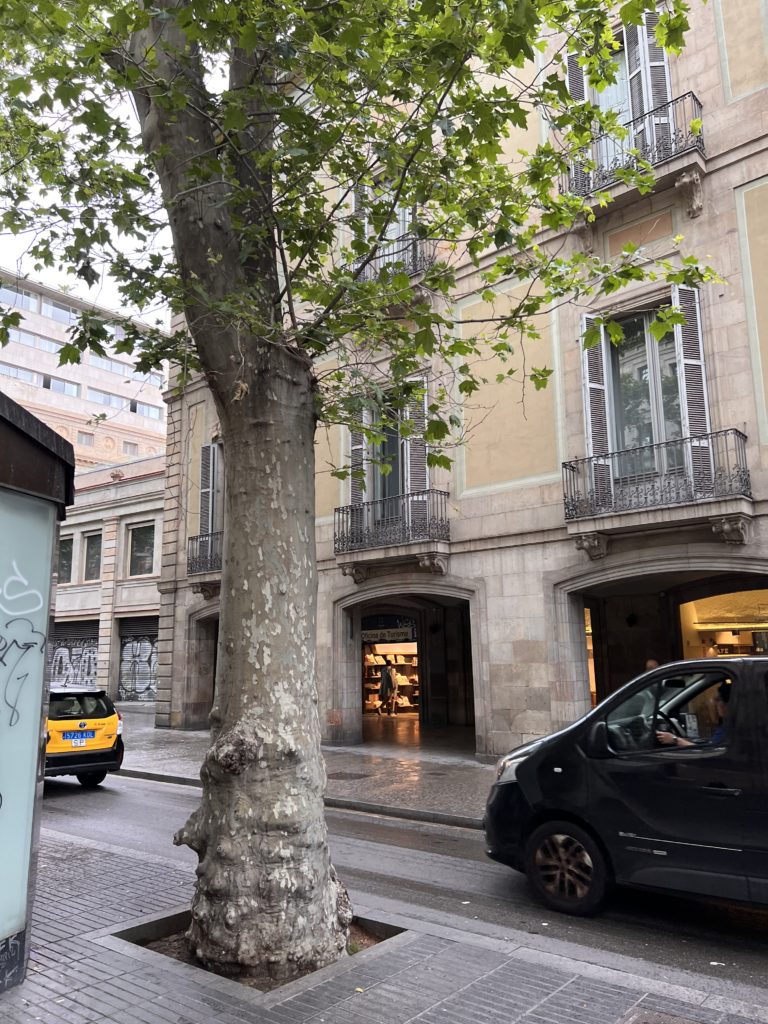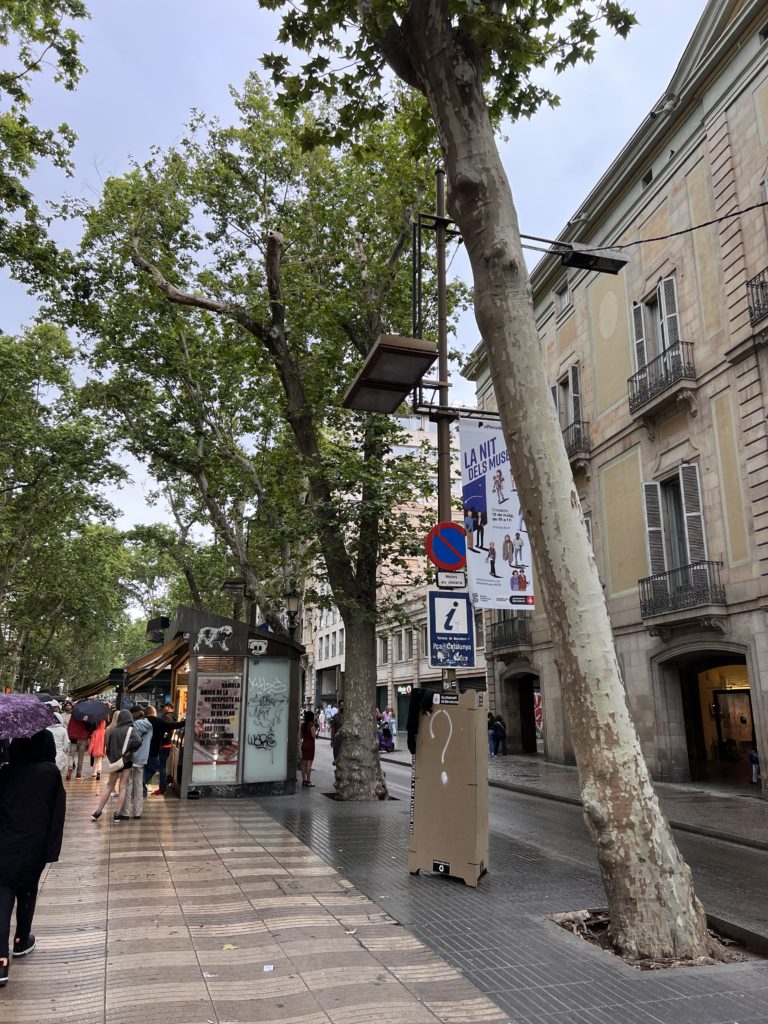Boulevard de Charles de Gaulle
Leading from the RR station, visitors and city dwellers are greeted with this grand and stately row of mature upright palm trees.
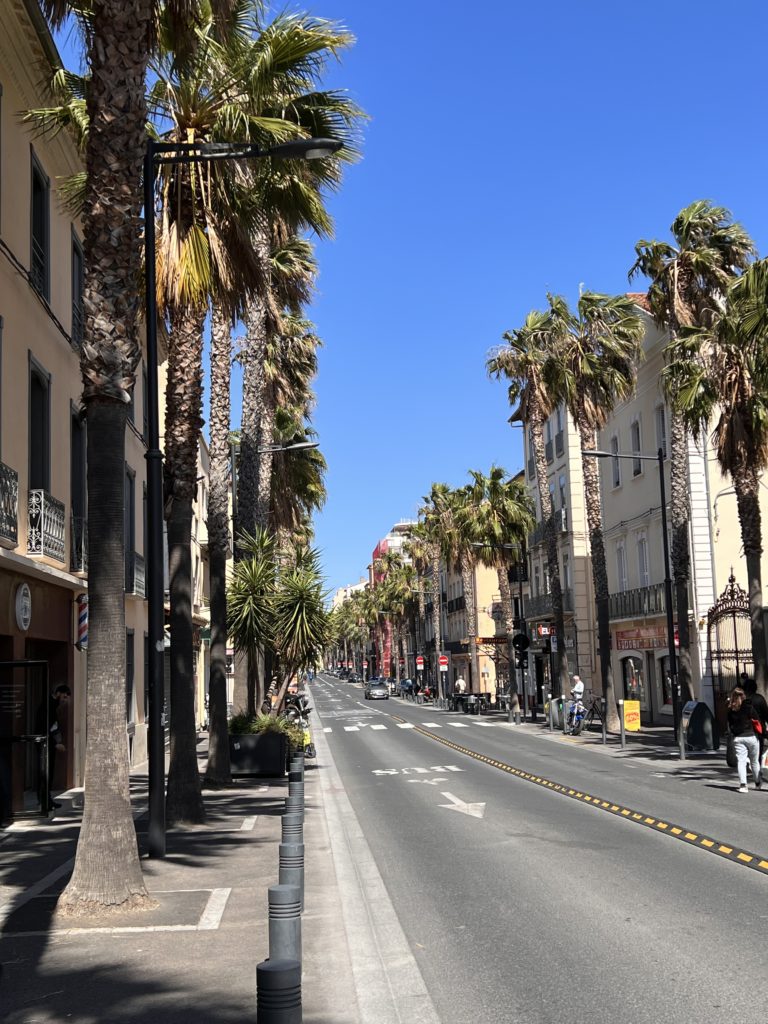
Below, a park in the city with street trees and a parking area. Here is featured London Planes, Palms and the newer generation of diverse and native-to-the-region trees. Our knowledgeable local source and host informed us that the Palms and Planes are in decline and are blighted and that the city is responding by directing more attention to planting more native species.
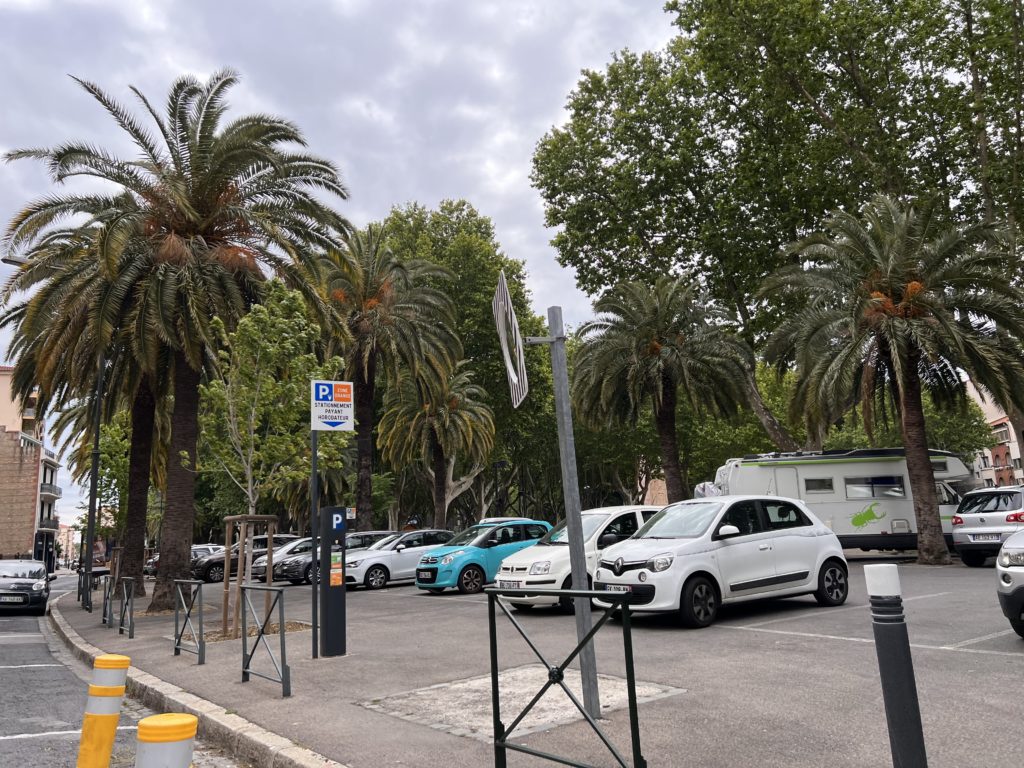
The Palm trees as street trees are lush and beautiful and it is a shame that they are in decline, but not surprising due to so many factors: the uniform genetic makeup rendering whole swaths of them vulnerable to disease, a recent prolonged drought in the region, climate change factors such as rising yearly temperatures and of course the urban conditions they grow in.
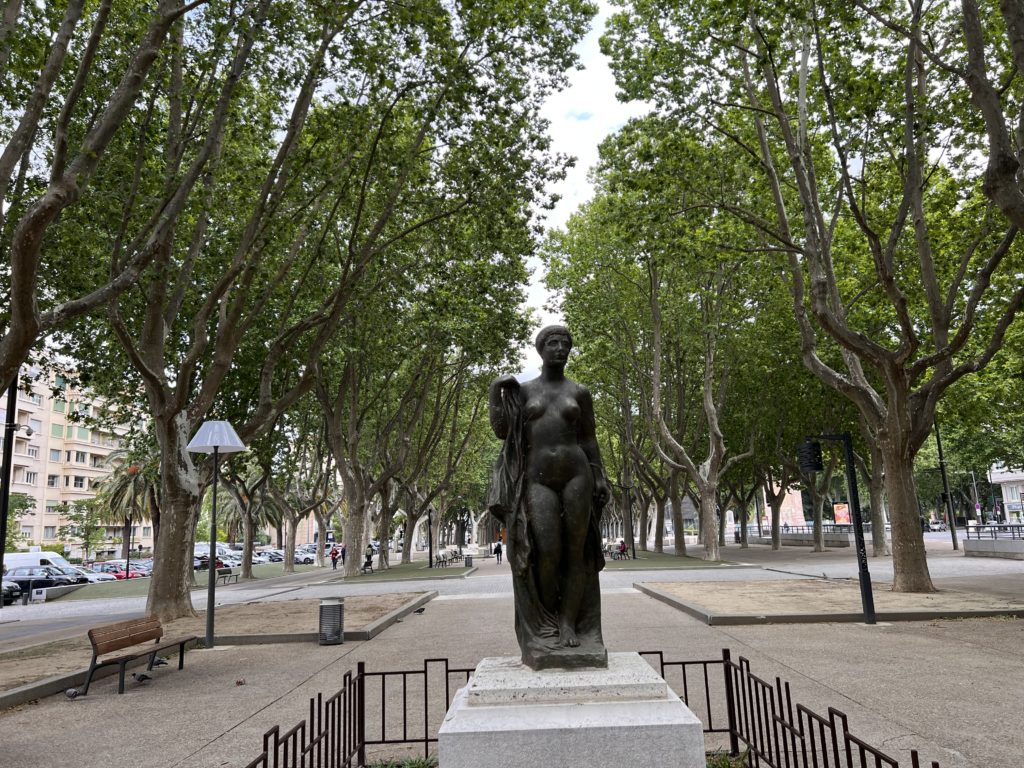
The London Planes create a cathedral-like canopy in this narrow park bounded by streets on both sides. Symmetry, order, and grandeur are on full display and the trees are carefully limbed up for an elegant appearance. The uniform appearance of the single species stretching into the distance complements the sensibility of the French Garden brought into the public sphere.
Sadly, we may be witnessing the last of this aesthetic. 100 years ago, it was imagined and it was planted, the impressive rows of a single species, the cathedral-like canopies, the expressive palms and planes-straight and orderly-going as far as the eye can see into the horizon, asserting the size and greatness of cities, canals and country lanes!
Today, we are benefiting from this late 19th and early 20th century vision. In the city of Perpignan, the gorgeous mature canopies of London Planes, Palms and Horse Chestnuts are at their fullest expression, and we need to appreciate them and comprehend the vision, to fully understand the aesthetic of them.
And here we are, still at a moment in time when they are in their fullest expression of magnificence, there is this blight that ultimately dooms them.
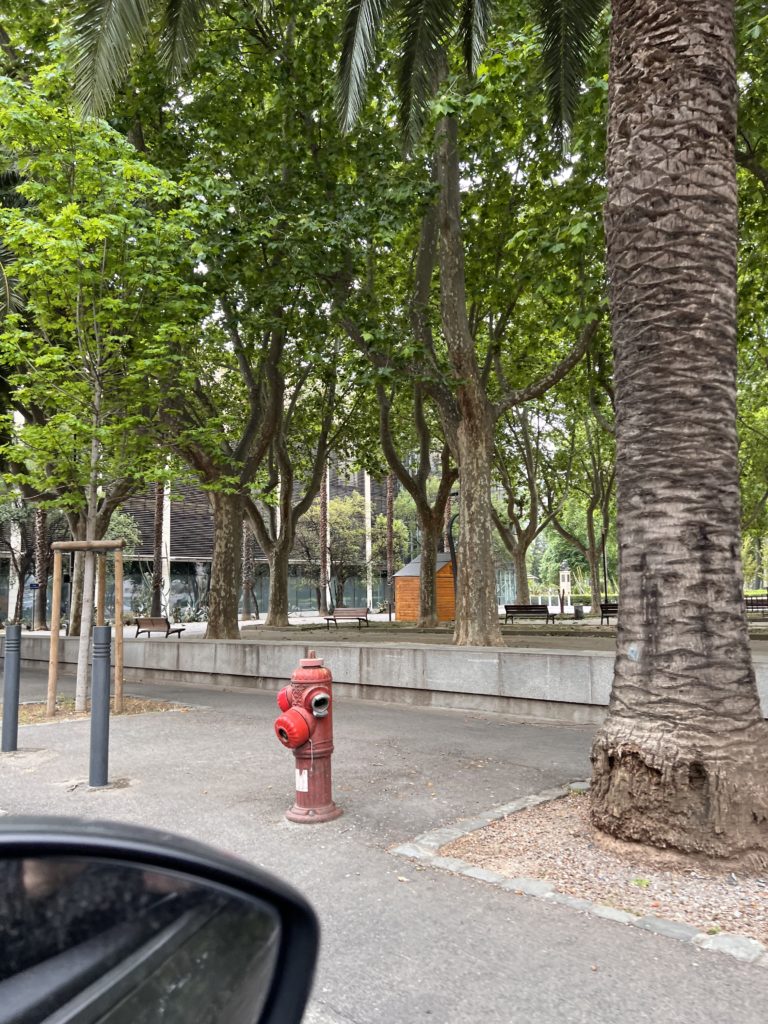
As the grand Palms die off, they are being replaced with Maples and Oaks.
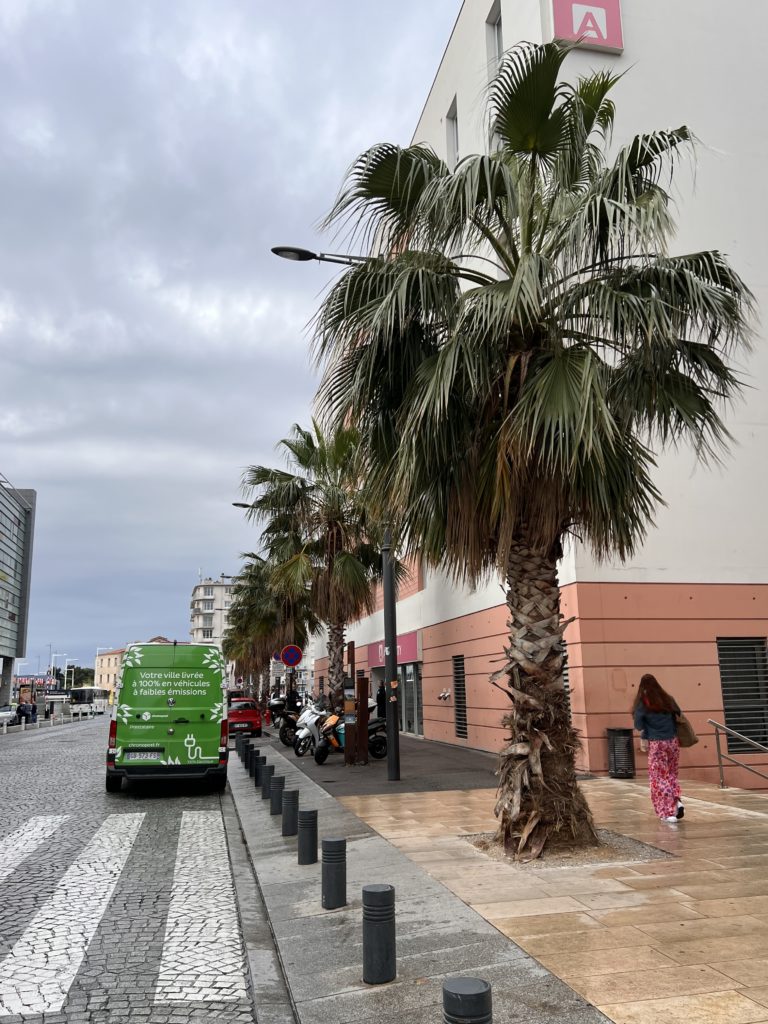
Across from the Railway station.
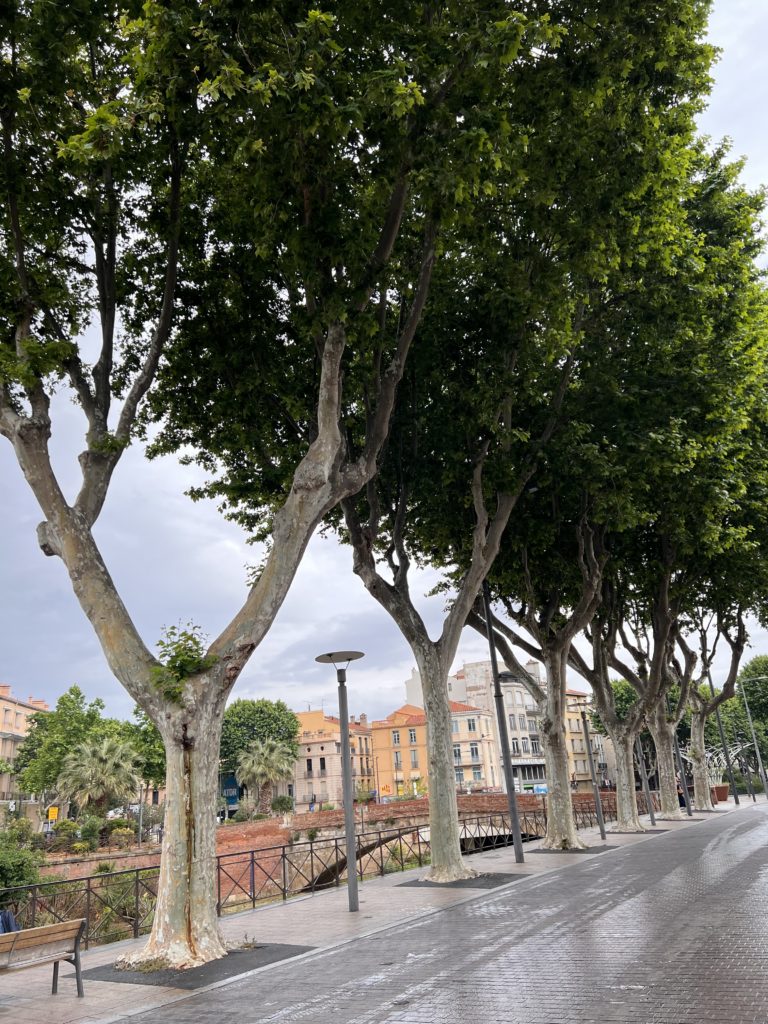
These Planes, in the typical harsh urban conditions are showing signs of stress.



